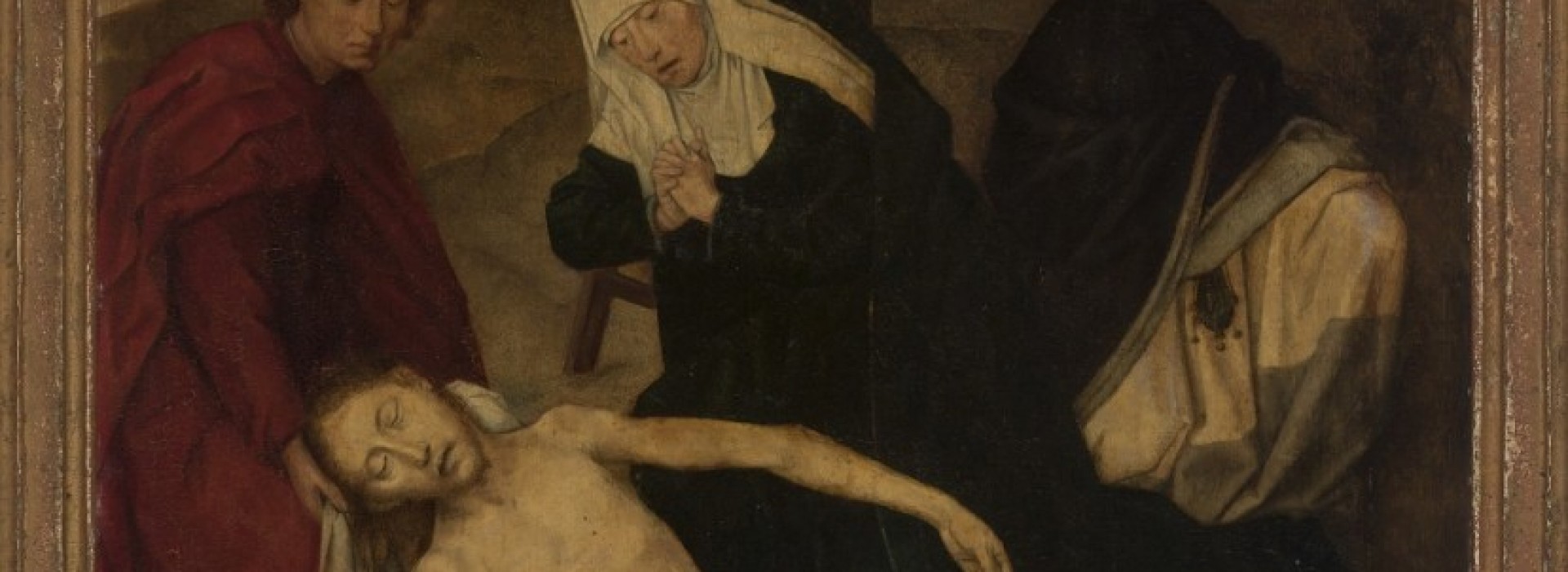Results to date
Research 2014-2018
The research has been completed. Following the publication of a first report in 2013, since 2014 further research has been conducted into the provenance of works acquired in the periods 1933-40 and 1948-present, and the acquisitions in the period 1940-48 have been reviewed. Afterwards, the museum did intensive research into the remaining works in the collection and concluded the research project Museum Acquisitions from 1933 onwards in December 2018.
The results from 2014 to the present concern 30 works with a potentially problematic provenance: 'After the Harvest' by Pieter Aertsen, 'Hodegetria or Virgin Mary with Child' by Anonymous, two objects from the Estate of Emanuel Vita-Israël, 'Mountainous Landscape' by Jacob van Geel, the paintings 'The Painting-Lovers', 'The Free Pardon' and 'Streetscene' by Honoré Daumier, ‘A Bishop Kneeling Before Saint Peter’ by a follower of Anthonie van Dyck, the drawing 'Girl Writing at a Table' by Max Liebermann, seven maiolica objects from the former Pringsheim collection and eleven pieces of maiolica from the former collection of Eugen Gutmann. You can read more about these 30 works at the page works-with-a-suspicious-provenance.
Research 2010-13
Following the creation of the first inventory in 2010, in 2011 the museum began researching the provenance of artworks acquired in the periods 1933-40 and 1948-present. In the first instance, the focus was on the period until 1954 (the last year in which Hergo sold artworks which were repatriated from Germany and formerly in Jewish possession at auction). The research included artworks that are the property of the City of Rotterdam and are managed by the museum, as well as works on loan from the Museum Boijmans Van Beuningen Foundation. The first results of the research project were made public in 2013. Nine works were found to have a potentially problematic provenance, namely the painting ‘The Virgin with the Infant Christ Holding an Apple’ by the Master of the Magdalen Legend, ‘The Lamentation of Christ’ by Hans Memling, and seven pieces of maiolica from the former Pringsheim collection. The works were published both on the website of the research project Museum Acquisitions from 1933 onwards and on the museum’s own website.
Delineation of the research periods
The parameters and criteria of the research project Museum Acquisitions from 1933 onwards were laid down by the Museums Association. Research has been undertaken into the provenance of all acquisitions since 1933, the year in which the Nazis came to power in Germany and in which the persecution and the confiscation of the property of Jews and other groups began.
Artworks formerly owned by Jews came onto the market via art dealers, auction houses and individuals not only during the war but also for many years thereafter. Until around 1954, artworks (most of them recuperated from Germany) for which no owner had reported to the Stichting Nederlands Kunstbezit (SNK) and its successor, Bureau for Restoration Payments and the Restoration of Property (Hergo), were auctioned off. In this way, artworks may have been acquired by Dutch museums without their knowledge of their problematic provenance. Because with many later acquisitions it is difficult to trace an exact provenance, the Museums Association has given the research into acquisitions in the period 1954-present a more global nature. For this reason, acquisitions in the periods 1933-40 and 1948-54 have been given priority. Nonetheless, in the second phase of the research project (since 2014), the museum has also carried out extensive research into acquisitions made after 1954.
Scope of the research
In order to determine which objects should be investigated, those works made after 1945, acquired before 1933 or acquired directly from artists or their families were excluded. Works on loan from the NK collection from the Cultural Heritage Agency of the Netherlands were also excluded, given that they were already subjected to a thorough investigation from October 1997 by the Ekkart Commission as part of the Origins Unknown project (final report 2006). Researched are:
- approx. 50.000 works from the Prints collection;
- 3.789 works from the Drawings collection;
- 908 works from the Applied Arts & Design collection;
- 678 works from the collection of Modern and Contemporary Art and the City Collection;
- 602 works from the Old Masters collection.


